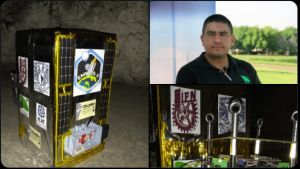This week, a Mexican commercial delegation will visit the former Soviet republic of Kazakhstan with an eye to broadening trade and scouting potential joint-venture investment projects.
The commercial mission will include representatives from 22 Mexican companies from six different states, as well as officials from the Mexican Agriculture, Livestock, Rural Development, Fisheries and Foodstuffs Secretariat (Sagarpa) and the government of the state of Jalisco.
But while Mexico and Kazakhstan have maintained bilateral diplomatic relations since 1992 and combined two-way trade amounts to nearly $120 million annually, this delegation will constitute the first of its kind from Mexico to Kazakhstan.
And as of now, there is virtually no investment on either side.
The main problem, of course, is lack of mutual awareness, as well as the complications of geographic distance, which entails at least a 36-hour, three-connection commute.
But Kazakh Ambassador Andrian Yelemessov, who opened his nation’s embassy here just last year, is not put off by those obstacles.
“I and the entire staff of the Kazakh Embassy here are hoping that, through joint efforts with Mexico, we will be able to better exploit the vast potential that exists to broaden binational relations in a number of fields,” Yelemessov said during a press conference at the Foreign Relations Secretariat (SRE) last week to commemorate the 25th anniversary of bilateral ties.
“We want to give new impetus to two-way cooperation in both the commercial and economic fields, as well as to increase cultural and humanitarian interchange.”
Obviously, Yelemessov is primarily focused on the potential benefits for his own country, but Mexican companies do have a lot to gain from pairing up with their Kazakh counterparts.
To begin with, Kazakhstan is the ninth-largest nation on Earth, spanning more than 2.7 million square kilometers, and it is the dominant nation of Central Asia, generating a full 60 percent of the region’s GDP.
Moreover, Kazakhstan boasts vast oil and gas reserves (the country’s combined onshore and offshore proven hydrocarbon reserves have been estimated to be between 9 and 17.6 billion barrels, roughly comparable to OPEC members Algeria on the low end and Qatar on the high end), and is the second-largest exporter of uranium.
In fact, Kazakhstan currently has 50 known uranium deposits in six provinces and more than 20 operating uranium mines, and last year the country accounted for about 38 percent of the world’s total production.
Kazakhstan also produces vast quantities of wheat, textiles and livestock, giving it food security and significant agricultural exports.
Even more importantly, Kazakh President Nursultan Nazarbayev, a former Soviet Communist Party chief who has courted large international corporations and foreign capital by opening trade, privatizing key parastate industries and streamlining bureaucratic processes, has managed to straddle both East and West, recently accepting a promise of more than $26 billion from China for infrastructure projects that will further Beijing’s Silk Road initiative, while enticing Western oil conglomerates to harvest Kazakhstan’s untapped hydrocarbon deposits, all while keeping more than 120 national ethnic groups appeased and serious political unrest in check.
Kazakhstan is also a card-holding member of Vladimir Putin’s new USSR Eurasian Economic Union, although more than a third of Astana’s total trade is with the EU.
Geographically, Kazakhstan is strategically located between Russia and China, making it a must-invest destination for all major transcontinental corporations.
All of these factors have helped to make Kazakhstan a regional prototype of political stability and economic prosperity, boasting a tenfold growth in GDP over the last 25 years.
But if Kazakhstan has a glut of natural resources, it also has a serious deficit in terms of democratic processes.
Press freedom is an alien concept in Kazakhstan, and there have been countless accusations by international human rights organizations of repression and even torture of opposition leaders.
For Mexican corporations looking to pair up with Kazakh companies, there will certainly be other obstacles to overcome, not the least of which will be language and cultural differences.
Furthermore, the current geopolitical landscape of the Central Asian country is strewn with the social landmines of fanatical jihadists and armed insurgent groups.
But despite these setbacks, Kazakhstan is a major regional power, and its global influence is increasing rapidly, especially now that it is a nonpermanent member of United Nations Security Council.
Also, the Kazakh government is bending over backwards to court investors, offering a slew of incentives, including 10-year tax holidays and unhampered repatriation of capital.
By the same token, a series of new bilateral accords and memorandums between Mexico and Kazakhstan aimed at protecting investors through the elimination of double-taxation and capital assurances are now in the works and are expected to be signed later this year.
The Mexican delegation that will be traveling to Astana this week will focus on business opportunities in the infrastructure, energy and agricultural sectors, but the potential for bilateral cooperation could span many more fields.
Ambassador Yelemessov said that his country is also looking to invest in Mexico, but is waiting for a sign of interest from this end.
Most Mexicans know little or nothing about the Land of the Great Steppe, but maybe it is time they start learning.
Thérèse Margolis can be reached at [email protected].










